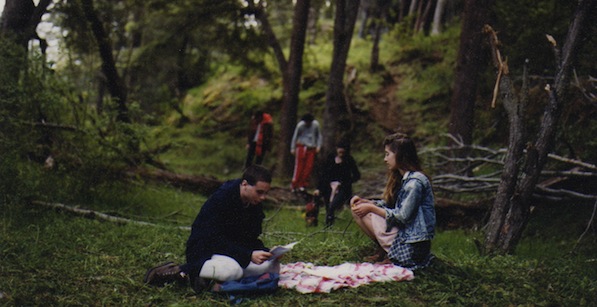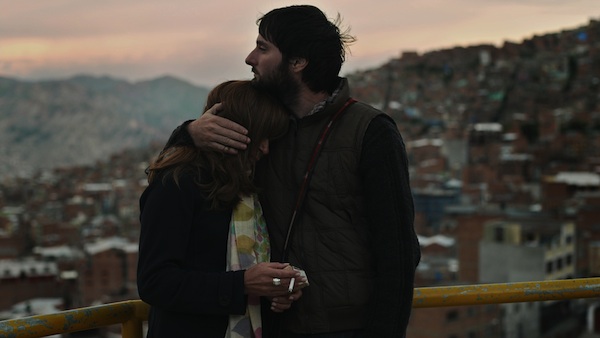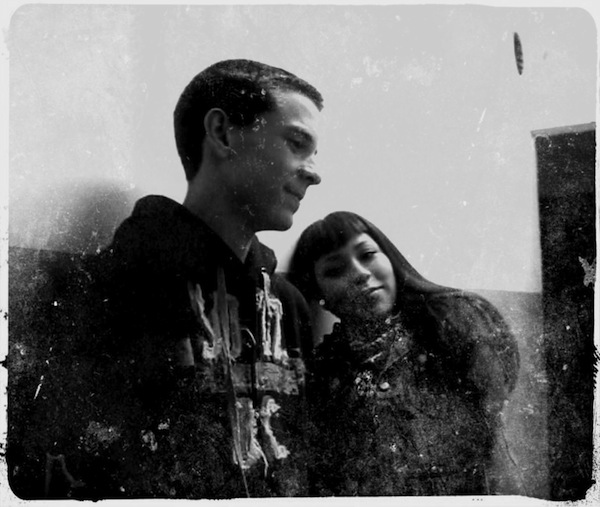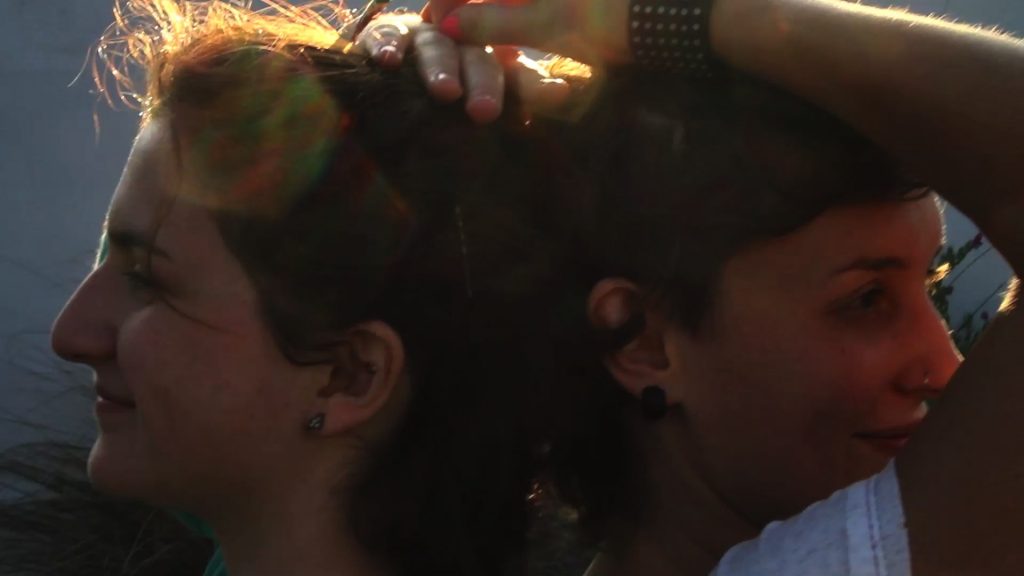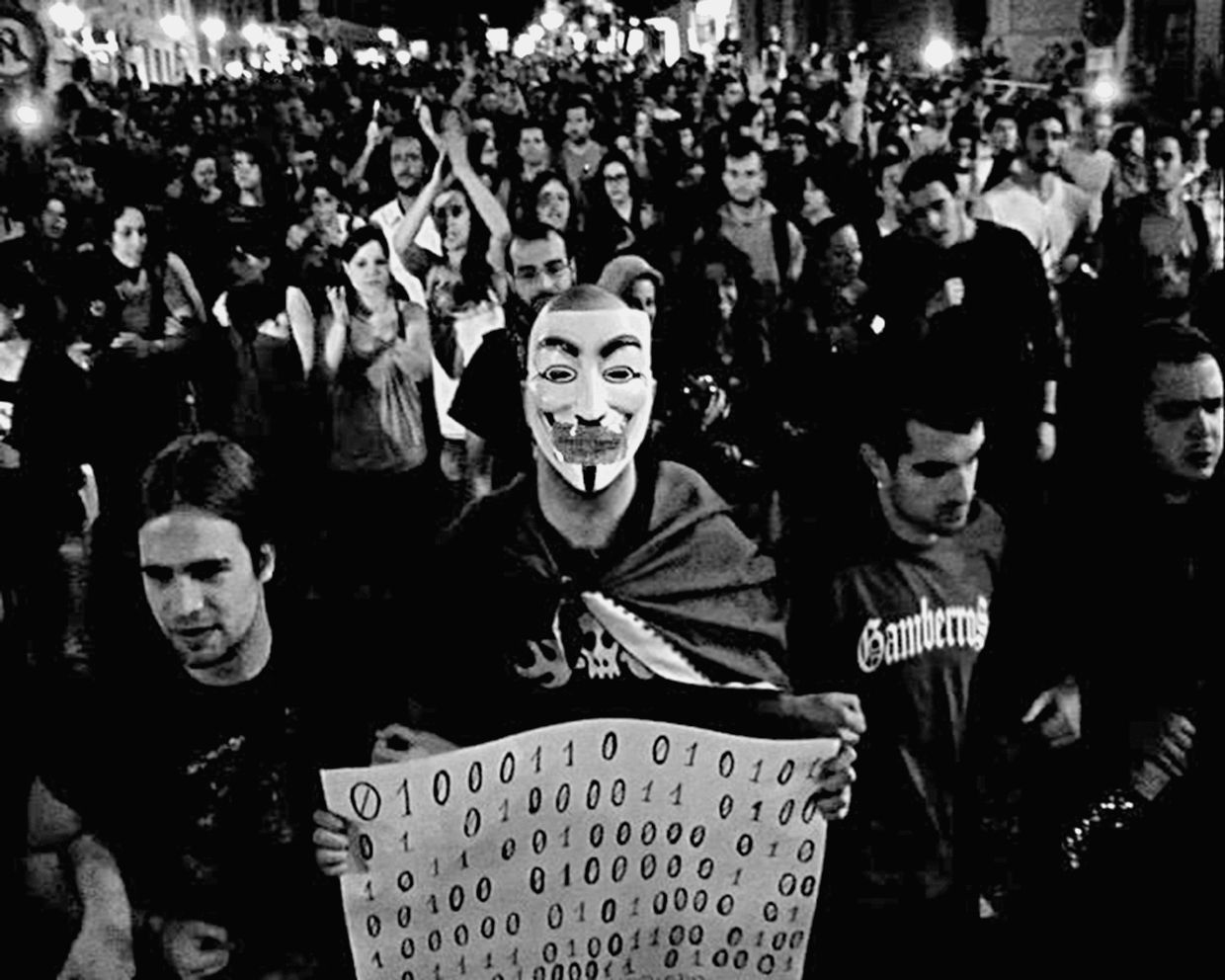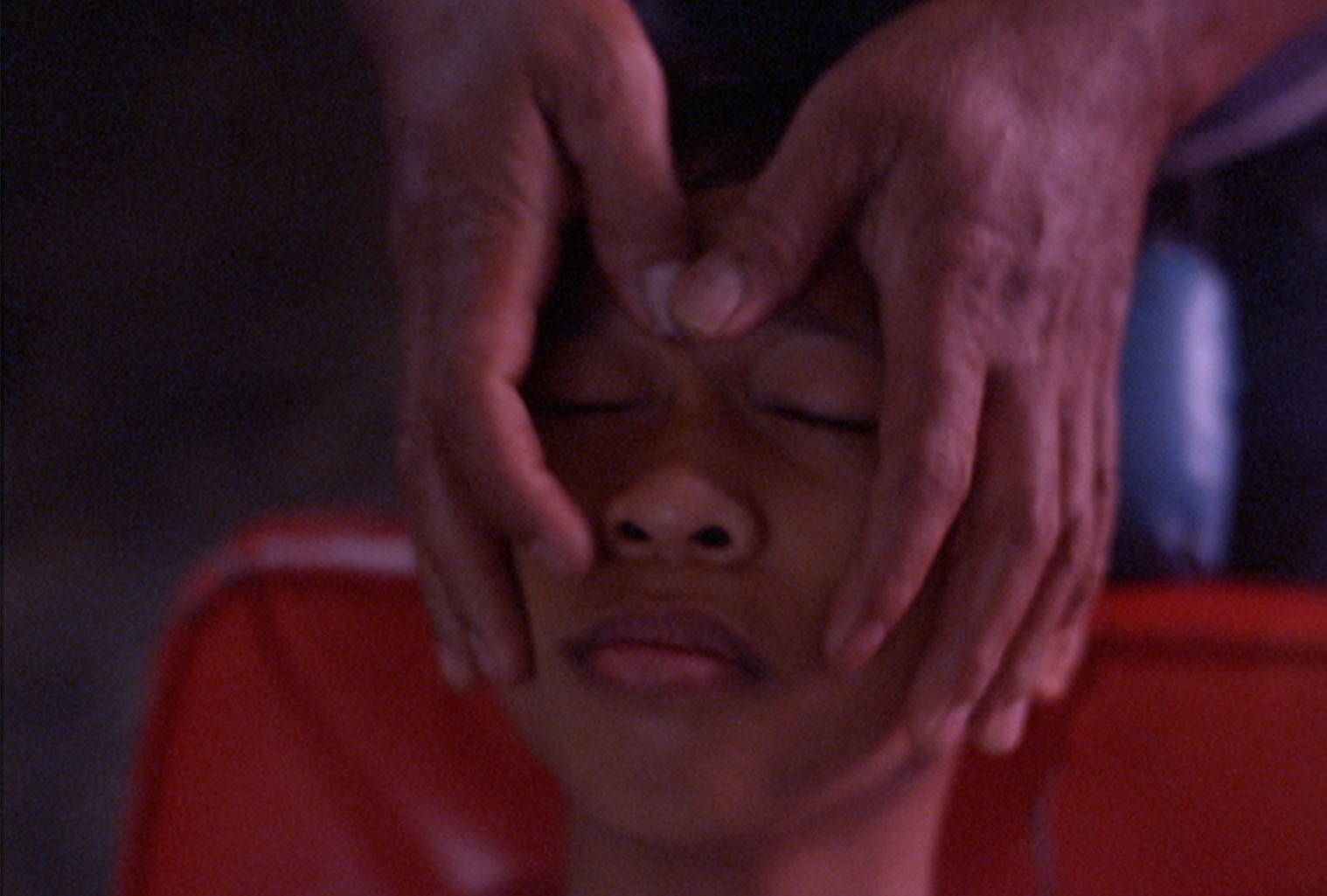The Buenos Aires International Independent Film Festival‘s self-proclaimed quinceañera, under new artistic director Marcelo Pannozzo, saw the preeminent South American festival leaving, as any self-respecting fifteen year-old would, its former home in working class Abasto to more upscale digs in the Recoleta neighborhood (but naturally sticking to the mall). The multiplex adjacent to the fabled city cemetery was host to the bulk of festival screenings (three hundred plus), but satellite venues such as the Teatro San Martin and the Planetarium lent a cooly retro vibe to an otherwise progressive and notoriously epic twelve-day haul. With the festival headquarters tucked away into the cloister of a former monastery, any impression of an establishing identity was lost to such contrasts, like the sublime incongruities provided by the program itself. My entry midway through the festival found me already missing the plot: take a chance on a native doc about martyred folk hero “gauchito” Gil in the Argentine Competition (rumoured to be an underwhelming vintage, Antonio Gil being of no exception)? Sink into the margins of Julio Bressane’s Brazilian udigrudi and the other Tabu? Yield to being in another country that is Hong Sang-Soo‘s fourteen-feature and rising filmography?—Hong’s style being both “honest and gaseous” according to program notes that can get poetically lost in translation.
This edition pared back some of its categorical distinctions (no more Trajectories) and the Cine del Futuro section became rechristened Vangardia y Genero (misleadingly translated as Avant Garde and Genre), where the unclassifiable Galician frontier folk fable Arraianos by Eloy Enciso stretched whatever boundaries and took the top honor.
Quaintly hermetic, quasi-portentous, neither Spanish nor Portuguese, indebted to Straub/Huillet and ‘adapted’ from O Bosque by Jenaro Marinhas del Valle (you could be forgiven for not knowing) and employing a formal strategy that entwines absurdist affect with ethno-natural observation, Arraianos still resists summation, its peculiar register irreducible to purely cinematic/theatrical precedents. It feels flushed of gravity, hollowed out dramatically to make way for certain facets to come to the fore: faces, gestures, trees, time, voices.
Perhaps such abstraction is inherently Galician in its sensibility. Lois Patiño’s long-shot landscapes possess a kind of Gurskian splendor: skiers carving expressionist lines in the icy canvas of distance, devoid of context; firemen fighting nocturnal blazes on an empty plain; fishermen cleverly hugging rocky outcrops as waves brake over them on the Coast of Death (where Galicia meets the Atlantic). Potiño’s work in progress Costa da Morte could prove, upon completion, to be a revelation—may an enterprising festival give it a proper baptism (that BAFICI fielded a minor retrospective of his shorts reflects the sort of curatorial zeal that fests twice its age should envy).
However, the question of curatorial intent becomes subordinate to the ever-popular query about the state of Argentine films, reflected in the competition: the litter isn’t chosen so much as corralled upon delivery. Jazmin Lopez’s trancey, tragic Leones stooped from its Venetian perch to grace the International Selection (films this sumptuous presumably no longer debut at BAFICI, but in Venice, and they come home merely to strut their feathers) and nabbed a jury prize. Over in the Official Argentine Competition, this left room for Santiago Loza’s La Paz, a Berlin Forum grad, to outshine the field for best film. The study of an aloof young man post psychiatric rehab, returned to his effete upper class home, who becomes increasingly estranged but for the intervening grace of the immigrant housemaid (the title, of course, is a coy reference to the Bolivian capitol). A more convincing display of the effects of class disparity could be found in Brazilian Gabriel Mascaro’s Doméstica, in which the director hands the camera over to kids for the purpose of filming their housemaids, with some candid results. The question remains over just who decided on the tri-pod.
The independently prolific Raúl Perrone got his due (best Director, Argentine Selection) for P3ND3JO5 (just say “Pendejos”), an electro-cumbia silent skate opera in three acts, which is commendable for its conception alone, as if Guy Maddin were channeling Carl Theodor Dreyer at Paranoid Park or some such thing. Speculation about strong competition contenders included Ivan Fund and Andreas Kofoed’s AB, a dyptich about a friendship between two girls in the provinces, the B side improbably employing 3D in a rather effective fashion. The Lita Stantic produced Habi, La Extranjera (María Florencia Álvarez), while a sufficiently crafted portrait of a young girl adopting the rituals of a Muslim community (the why lost on me due to lack of subtitling), lived down the producer’s knack for backing daring work. Leonardo Brzezicki’s Noche is ostensibly hypnotic, duly referential, and unfortunate for being in the company of its similarly conceived compatriot Leones, as well as vying with Peter Strickland’s surpassing sound-centric Berberian Sound Studio (Best Film, International Selection).
The inclusion of a sidebar BAFICI + Fipresci x 15, which essentially rolled out the native hits from the past 15 years, was both flattering evidence of the wealth of talent the New Argentine Cinema has sustained—one could take refuge in the program and safely savor Martin Rejtman’s Silvia Prieto (1999)—while the juxtaposition did little to favor the current competition. Similar could be said of Pablo Trapero’s woeful festival trailers, which seem so distant from the vision that spurred El Bonaerense (2002). As a side note, it is worth considering the role of the trailer within this context: BAFICI’s inclusion of a shorts program of Vienna Film Festival trailers was proof that the form can be elevated, as did a program of British artist Redmond Entwistle’s conceptual shorts that included Belfast Trio, originally a gallery piece involving casting computer and film industry personnel—the bait for a new economy in Ireland—that was strategically placed in theaters before screenings of, ironically, Hollywood films. One could only hope such a cunning model might be employed on future BAFICI commissions.
As hunger was high for an Argentine hit, anticipation peaked for Santiago Mitre’s collaboration with choreographer Juan Onofri Barbato, Los Posibles; this was no prolix political thriller in the wake of El Estudiante (2012) but a rather compelling, kinetic black-and-white dance film of a piece conceived by Barbato and a group of teenaged performers (Grupo KM29), engaged in abstracted rituals that appear initially to be reconfiguring codified masculinity. The propulsive on-site soundtrack—a drummer/composer (Ramiro Cairo) is seen presiding over the industrial “stage” beating out the choral role—lifts this fifty-five minute mystery off the screen.
From kinetic to static: a host of films that might conveniently be called structural occupied a conspicuous space within the program (Benning films, it’s worth noting, are a BAFICI staple by now). Tabula Rasa by Jonathan Perel follows up on his 17 Monuments by focusing on a single site, the former Center for Torture, Detention, and Extermination (ESMA), chronicling the building’s demolition and watching as the dust settles, as if to recover a relationship between atrocities, the immemorial and the material. Can we effectively demolish the past? Can we successfully memorialize anything? In Habitat, Ignacio Maslorrens offers a forty-minute montage of Buenos Aires that is, improbably and quite spectrally, devoid of people. It is full of machines, and lobbies, and other not-so salient testaments to the human condition (William Eggleston comes to mind). Similarly denuded but far more lyrical is Joao Pedro Rodrigues’ farcical and melancholy zombie film, Manhã de Santo António, which imagines Lisbon emptied but for the cars and a brood of hungover revelers emerging from the subway, vomiting, roaming the streets at dawn the morning after the Patron Saint celebrations. The Pessoa quote that acts as a coda—“it is better not to go/where one will not be”—remains cryptic in context. Is it in keeping with themes of unrequited love, displacement and marginalia that run through his work? (Or by then was I becoming weary from BAFICI’s exhaustive day-by-day programming and wondering if it pertained to my participation?).
Sylvain George, the revelation of the 13th BAFICI for his striking portrait of immigrants in Calais (Qu’ils reposent en révolte (Des figures de guerre) was represented with Vers Madrid: The Burning Bright! (Scenes from the Class Struggle and the Revolution), a far less exigent take on oppositional movements and emancipatory politics, here ensconced in Madrid during a protracted period of demonstrations in 2011. It is relevant, poetic, redundant perhaps, and doubtful if any of the characters ambling through Jonás Trueba’s similarly-set-but-worlds-away, endearingly off-handed ode to cinema Los Ilusos (The Wishful Thinkers) could be inconvenienced by such a class struggle, let alone be aware of it, busy as they are complaining to film projectionists while out on dates, wrapped in grainy light seemingly borrowed from he nouvelle vague, and just kind of making a film while on break from work. Shambling in nature but deceptively rich, it has charm to spare (Francesco Carril’s wide-eyed performance earned him Best Actor prize. Best Actress? That easily went to those beguiling women—María Villar, Agustina Muñoz, Elisa Carricajo and Romina Paula—in Matías Piñeiro’s discreet ode to Shakespeare, Viola).
Quick question: Would it be fair to mention John Torres’ Phillipine folktale Lukas The Strange in the same breath as Apichatpong Weerasethakul, or is it merely best to turn one’s shirt inside-out to resist the trickery of the tikbalang?
Upon entering the theater to Stemple Pass, James Benning’s four shot film based on the journals of Ted Kaczynski (a.k.a. the Unabomber) from his hermetic retreat into the Montana wilderness, I was told by an esteemed film professional that what I was about to see was merely more Benning: a cabin, some seasons, only there’s a voice this time. I’d been advised. As I sat watching and, more importantly, listening, the magnitude of Benning’s creative undertaking and by extension Kaczynski’s “project” began to cast a haunting spell, no less for coinciding with the Boston Marathon bombing the same week. No image shook me more than that of Kaczynski witnessing an elk trying futilely to cross a creek, its antlers caught in the thicket, exhausted from trying to extricate itself, and finally still enough that Kaczinsky may reach out and rest his hand in the animal’s ribcage. That this picture never materializes but is conjured in the mind’s eye from Benning’s droll incantation of Kaczynski’s strikingly poetic letters is testament to the director’s patient compositional strategy. Indeed, this is a slow burn political thriller by radically different means, in which the mind of a killer is opened diaphanously, traced like the rings in a cross cut tree to see just where the growth flourished, and when it was stunted. If getting revenge is the defining political theme of our century thus far, this is the film that stares down the frightening logic of redress. A little sugar in the gas tank has never seemed so evil.

